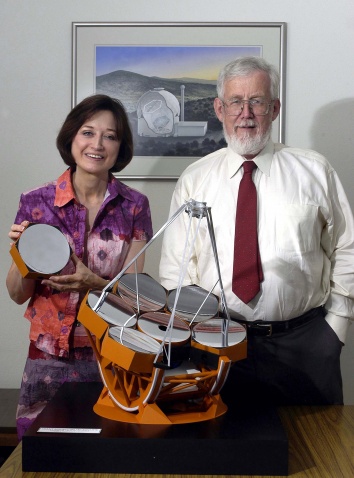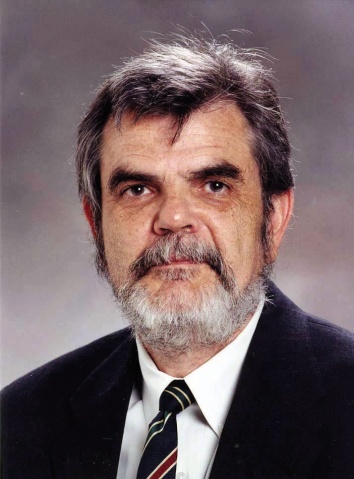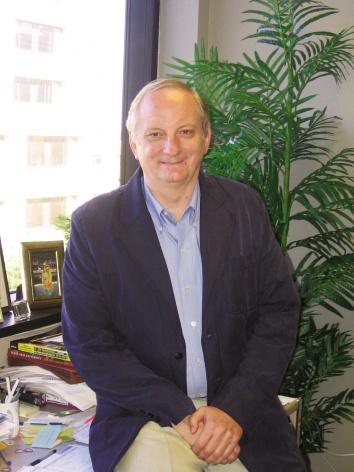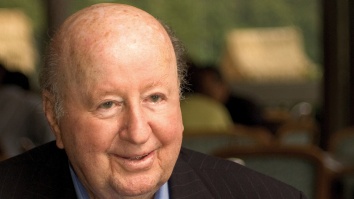Texas Legislature Honors University of Texas at Austin, Texas A&M University for Joint Efforts in Astronomy
24 February 2009
AUSTIN, Texas —The 81st Legislature of the State of Texas today (Feb. 24) will honor the state’s two flagship universities with a joint resolution, recognizing their cutting-edge research and outreach efforts in astronomy in celebration of 2009 as the official International Year of Astronomy.
The University of Texas at Austin and Texas A&M University will be recognized at 10 a.m. in the House of Representatives Chamber in the State Capitol, and at about 11 a.m. in the Senate Chamber. I n House Concurrent Resolution 55 they will be cited for their commitment to unravel the mysteries of the cosmos through joint research projects such as the Hobby-Eberly Telescope Dark Energy Experiment (HETDEX) and their participation in the forthcoming Giant Magellan Telescope (GMT).
T he universities will be acknowledged for their combined efforts to educate and excite the citizens of Texas about the wonders of the universe through diverse outreach programs to teachers, students and the public. This year’s outreach efforts include a year-long speakers’ series in cities across Texas commemorating the International Year of Astronomy, a world-wide celebration of the 400th anniversary of Galileo’s first astronomical use of the telescope in 1609.
Leaders of the two universities’ astronomy programs, along with Houston businessman and philanthropist George P. Mitchell, a significant financial contributor to both programs, will be present on the floor of the House and Senate chambers when the resolutions are read.
“We’re very glad to be working with Texas A&M on these research projects,” said Dr. David L. Lambert, director of The University of Texas at Austin McDonald Observatory. “These are expensive endeavors that push the frontiers of astronomy. Thus, it’s to the benefit of all that the major public universities in the state, UT and Texas A&M, pool their talents.”
Dr. Edward S. Fry, professor and head of the Department of Physics at Texas A&M, said, “The astronomy program at Texas A&M was initiated just a couple years ago, and since that time, it has been making extraordinary progress. This collaboration in astronomy between Texas A&M University and The University of Texas at Austin is a striking example of the benefits that will accrue to the state of Texas as a result of such partnerships — and there are many — between these great state institutions.”
Texas A&M has recently joined HETDEX, The University of Texas at Austin-led project to study “dark energy,” the mysterious force causing the universe’s expansion to speed up over time. Dark energy has been called the most important question in science today. The experiment will be carried out at The University of Texas at Austin’s McDonald Observatory with the Hobby-Eberly Telescope — one of the world’s largest. The University of Texas at Austin and Texas A&M are collaborating in building the instrumentation that will be mounted on the telescope for this project, which is on track to provide results before any of the major federally funded dark energy projects.
T he universities are also both founding partners in a collaboration to build one of the largest new telescopes of the future, the Giant Magellan Telescope (GMT). George Mitchell’s $1.75 million gift to Texas A&M in 2004 that was matched by The University of Texas at Austin paved the way for both universities’ partnership in the GMT. The telescope will be able to probe the cosmos more deeply than any telescope in use today, thanks to its seven mirrors that together provide the power of a single 25-meter mirror. GMT will be built in the Andes Mountains of Chile, at Las Campanas Observatory, a site owned by the Carnegie Institution for Science. Other founding partners in GMT include Carnegie, Harvard University, the Smithsonian Astrophysical Observatory, The University of Arizona, Australian National University, Astronomy Australia Limited, and the Korea Astronomy and Space Science Institute.
Next month will mark the debut event in a joint endeavor between The University of Texas at Austin and Texas A&M: the International Year of Astronomy Texas Speakers’ Series. The series will feature astronomers from both universities traveling to cities across the state to present their astronomical research to area audiences. D estinations include Amarillo, Arlington, Austin, Brownsville, College Station, Dallas, El Paso, Fort Davis, Houston, Laredo, Lubbock, Midland and San Antonio.
— END —
Media Contacts: Rebecca Johnson, Astronomy Program, The University of Texas at Austin, 512-475-6763, rjohnson@astro.as.utexas.edu
Shana Hutchins, College of Science, Texas A&M University, 979-862-1237, shutchins@science.tamu.edu
For Additional Information:
Texas House of Representatives Concurrent Resolution 55
http://www.legis.state.tx.us/tlodocs/81R/billtext/html/HC00055I.htm
Online press kit with links to images and information on HETDEX, GMT, and Speakers Series
http://mcdonaldobservatory.org/iya/IYApresskit
University of Texas at Austin McDonald Observatory
http://mcdonaldobservatory.org
Texas A&M Astronomy
http://astronomy.tamu.edu









